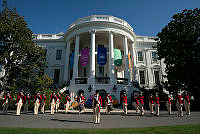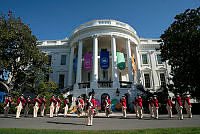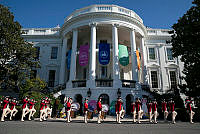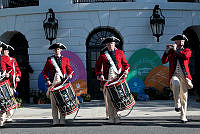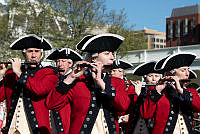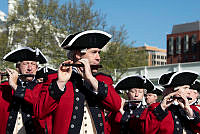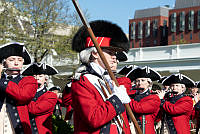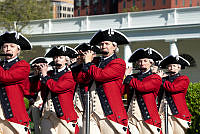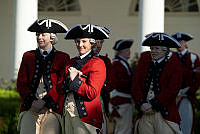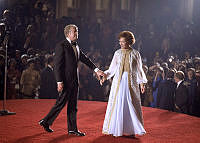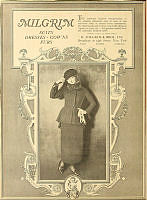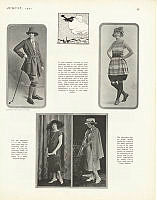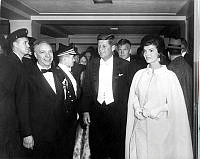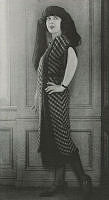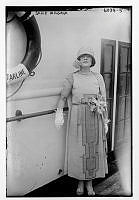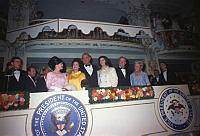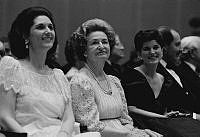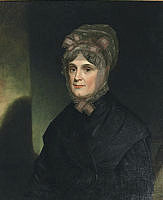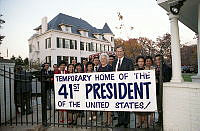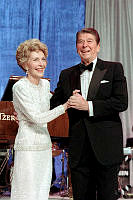Presidential Inaugurations: Symbolic Gestures
Copyright © White House Historical Association. All rights reserved under international copyright conventions. No part of this article may be reproduced or utilized in any form or by any means, electronic or mechanical, including photocopying, recording, or by any information storage and retrieval system, without permission in writing from the publisher. Requests for reprint permissions should be addressed to books@whha.org
Gallery
-

America’s Cold War military strength was showcased during Dwight D. Eisenhower’s 1957 Inaugural Parade.
Martin Luther King, Jr., Memorial Library, Washington, D.C. -

The Lincoln Inaugural Parade of 1861 included only one float, representing the U.S. Constitution and the Union.
Library of Congress -

For James A. Garfield's 1881 inauguration, large wooden arches were erected, adorned with coats of arms and mottoes of the states.
Library of Congress -

The Nixon Inaugural Parade of 1969 had a reduced military presence because of the unpopularity of the ongoing war in Vietnam.
National Archives and Records Administration
Inaugural ceremonies are huge public events, and both presidents and inaugural planners have recognized their potential for symbolic gestures.
James Madison was inaugurated at a time when Americans were developing their own national identity. Demonstrating this emphasis, every item of President Madison’s inaugural outfit was made in the United States, including his silk stockings, manufactured in Massachusetts.
With the nation on the brink of civil war, the only float in Abraham Lincoln’s 1861 parade was one symbolizing the Constitution and the Union in red, white, and blue with a small girl representing each of the thirty-four states, including those that had already seceded. In 1961, a float carrying a replica of John F. Kennedy’s PT (Patrol Torpedo) boat along with its surviving served as a dramatic reminder to the American people that this president was a war hero.
With anti-Vietnam War sentiment running high, parade planners for Richard Nixon’s 1969 inauguration limited the number of military units in the parade to avoid the appearance of being too hawkish.
Forging a link between himself and the democratic ideals of Thomas Jefferson’s young republic, William J. Clinton arrived in Washington for his 1993 inauguration via a chartered bus which began its journey at Jefferson’s Virginia home, Monticello.














